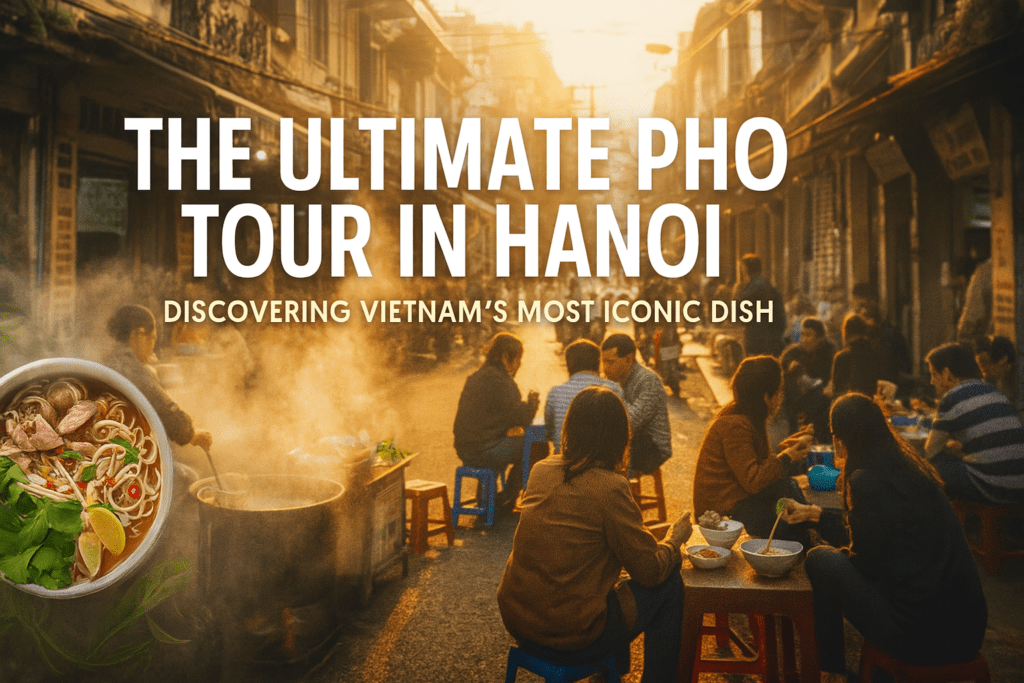Vietnams Street Food: ULTIMATE PHO HUNT in Hanoi! Join Mark Wiens and local food expert Khoa as they explore the rich history, regional styles, and unforgettable flavors of pho – Vietnam’s most beloved dish. From classic beef pho in hidden alleyway shops to the unique chicken pho of Hanoi’s bustling evening markets, this journey uncovers why pho has captivated taste buds across the world. You’ll not only learn about its origin in Nam Định and how French influence played a role, but also taste the evolution of pho from bone broth traditions to gourmet variations with ovary eggs, blood jelly, and dry-style noodles.
Table of Contents
Toggle🧭 Introduction: Welcome to Hanoi – Capital of Pho
Mark Wiens kicks off the day in Hanoi, Northern Vietnam’s capital and home to the most legendary bowls of pho. He’s joined by Khoa from Hanoi Food, a local food enthusiast who has explored every corner of the city’s culinary map. Together, they’re on a mission to uncover the best bowls of pho while diving into the cultural and historical origins of the dish.
🍜 Stop 1: Traditional Beef Pho at 6:30 AM
Their first stop is a quiet intersection just opening for the day. The aroma of beef broth laced with star anise and cinnamon fills the morning air. The pho here is unique — a dual beef combo of boiled fatty slices and freshly blanched red meat, served over handmade noodles in a crystal-clear broth.
🧪 Flavor Profile:
- Broth: Natural sweetness from bone marrow
- Noodles: Silky, fresh, high-quality
- Toppings: Tender fatty beef slices, spring onions, lime, and chili
Mark notes how this style keeps the seasoning minimal, a trait common to Northern Vietnamese pho.
Interlude: The Origin Story of Pho
Pho is a relatively recent culinary invention, originating in the late 19th or early 20th century. The consensus is that it began in Nam Định province, where locals simmered discarded beef bones from French colonial meat markets into rich broth.
Key History Points:
- French influence introduced beef consumption.
- Locals used the leftover bones to create broth.
- The dish gained popularity among textile and construction workers.
- Pho then traveled with laborers to Hanoi, evolving with local tastes.
Stop 2: Legendary Pho at Phở Thìn
Next, they visit the iconic Phở Thìn, one of Hanoi’s most famous establishments. Here, the beef is stir-fried before being added to the bowl, giving the broth a smoky, wok-fired essence unlike the cleaner broth from earlier.
Unique Twist:
- Stir-fried beef for richer flavor
- Heaps of diagonally sliced green onions
- Optional: soft-boiled eggs poached in broth
Mark’s highlight: The broth has a deep umami flavor, enhanced by chili sauce or fresh chilies, and the fried dough stick (quẩy) soaks up broth perfectly without losing its crisp.
History Continued: Pho’s Expansion Across Vietnam
The video explains how after the Long Biên Bridge project, construction workers brought pho to Hanoi. Nam Định families moved north, and pho became mainstream in the capital, eventually spreading south to Saigon, where it took on sweeter and more herb-heavy flavors.
Stop 3: Chicken Pho at Night – Phở Gà Specialties
As evening falls, the duo visits a bustling street vendor known for chicken pho (phở gà). Piles of freshly boiled chicken, yolky ovary eggs, and rich yellow broth made from skin and bones make this variation stand out.
Highlights:
- Ovarian eggs: tender, balloon-like, buttery texture
- Broth: Clear, golden, deeply flavorful
- Add-ins: Garlic-infused vinegar instead of lime
One of the bowls includes chicken uterus — a rare, delicate part served traditionally in Hanoi.
Stop 4: Dry Pho (Phở Trộn) – The Unexpected Finale
In their final stop, Mark and Khoa enjoy dry-style pho — where noodles are mixed with soy, garlic, chicken fat, and peanuts. A side bowl contains the broth. This vibrant version is sweet, salty, minty, and saucy — a complete contrast to traditional pho.
Components:
- Dry noodles mixed with sauces and herbs
- Soup on the side
- Toppings: chicken organs, deboned thigh meat, jelly-like chicken feet
Mark calls this version “pho at its finest” — balancing tradition and innovation.
The Global Journey of Pho
After the Vietnam War, millions migrated, bringing pho to the U.S., France, and beyond. Each diaspora community adapted pho to its local ingredients and cultural palate, turning it into a global comfort food.
Why Pho is Loved Worldwide:
- Simple ingredients, deep flavors
- Customizable spices and toppings
- Comforting, communal, and affordable
Closing Thoughts:
This pho adventure in Hanoi isn’t just a food tour — it’s a cultural deep dive into Vietnam’s most iconic bowl. Whether it’s beefy bone broth at sunrise or chicken ovary eggs by moonlight, every bowl tells a story.
Mark thanks Khoa and the local vendors, inviting viewers to explore Hanoi for its unforgettable food — and to catch his next episode on “5 Vietnamese Dishes You Must Try That Aren’t Pho.”
